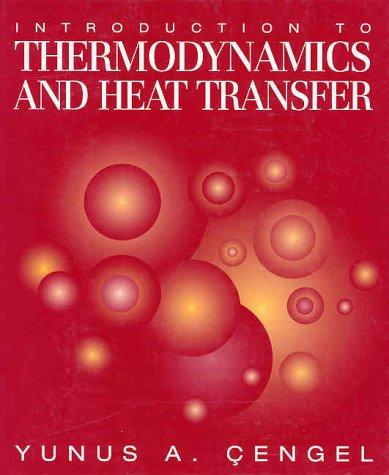:: Description
This text is an abbreviated version of standard thermodynamics and heattransfer texts,covering topics that the engineering students are mostlikely to need in their professional lives. The thermodynamics portion of this text is based on the textThermodynamics:An Engineering ApproachbyY. A. Çengel and M. A. Boles,and the heat transfer portion is based on Heat and Mass Transfer:A Practical Approachby Y. A. Çengel,both published byMcGraw-Hill. Most chapters are practically independent of each other andcan be covered in any order. The text is well-suited for curricula that have acommon introductory course on thermodynamics and heat transfer. Instructorswho desire to incorporate some coverage of fluid mechanics in their coursesmay wish to use the textbookFundamentals of Thermal-Fluid Sciencesin-stead,as it offers coverage of the essentials of fluid mechanics in addition tothe thermodynamics and the heat transfer coverage in this book.
It is recognized that all topics of thermodynamics,and heat transfer cannotbe covered adequately in a typical three-semester-hour course,and,therefore,sacrifices must be made from the depth if not from the breadth. Selecting theright topics and finding the proper level of depth and breadth are no smallchallenge for the instructors,and this text is intended to serve as the groundfor such selection. Students in a combined thermal sciences course can gain abasic understanding of energy and energy interactions,as well as variousmechanisms of heat transfer. Such a course can also instill in students the con-fidence and the background to do further reading of their own and to be ableto communicate effectively with specialists in thermal sciences
:: Table of Contents
Preface
1. Introduction and Overview
I. Thermodynamics
Introduction
2. Introduction and Basic Concepts
3. Energy, Energy Transfer, and General Energy Analysis
4. Properties of Pure Substances
5. Energy Analysis of Closed Systems
6. Mass and Energy Analysis of Control Volumes
7. The Second Law of Thermodynamics
8. Entropy
II. Heat Transfer
Introduction
9. Mechanisms of Heat Transfer
10. Steady Heat Conduction
11. Transient Heat Conduction
12. External Forced Convection
13. Internal Forced Convection
14. Natural Convection
15. Radiation Heat Transfer
16. Heat Exchangers
Back Matter
Appendix 1: Property Tables and Charts (SI Units)
Appendix 2: Property Tables and Charts (English Units)



